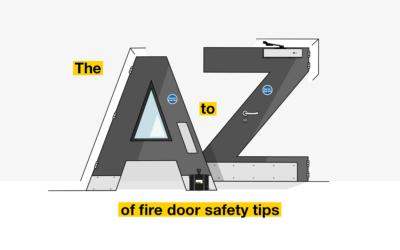Arson is a criminal act which can lead to devastating consequences. Arson in schools is more common than some may think. In the UK there is an estimate of between 1400-1800 school fires each year, with 75% of these thought to be caused on purpose*.
It is important that there is a clear understanding on who is responsible for the risk management of fire on the school premises. This could include; school governors, head teachers, the caretaker, the premises manager and Local Education Authority. Once the relevant people have been identified, responsibilities can be delegated and a fire action plan can be put in place.
All schools should have a fire action plan that includes instructions on assessment, prevention and recovery. It may even be beneficial to have a visit from a professional external body who can carry out an official assessment on the school.
Here are some key points to consider as part of your action plan:
Deter and prevent unauthorised entry onto the site
The Arson Prevention Bureau has found most cases of arson take place outside of school hours with 11pm being peak time**. This could be because the perpetrator will feel as though there is less risk of them being caught out as they may not be seen. There are lots of ways you can deter and prevent unauthorised access to the school property:
- Staff living on site or next to the school means there is a constant monitor on the premises.
- External doors and windows should have a thief resistant locking system.
- Intruder alarms should be fitted, and all appropriate people should receive notification in the event of an emergency, including the security providers.
- Liaising with neighbours and local schemes such as Neighbourhood watch.
- CCTV should be fitted near all entrance points, plus hidden areas of the premises.
- There should be an end of day procedure to ensure all exits are closed, locked and alarms are set.
Reduce the opportunity for a fire to be started
Good maintenance should be kept on site so that there are minimal things that can be used to set fire to or ignite a fire with.
- All rubbish/ recycling bins should be stored in a secure location at least 8 metres away from the building. They should all be kept in a container made from fire resistant materials and locked. Other storage areas such as sheds should also be kept at least 8 metres away from the building to prevent spread.
- All pipework should be hidden or protected.
- Electric and gas metres should be in a secure environment.
- Any mobile buildings should be filled at the bottom to avoid a fire being started underneath.
- The school and immediate surrounding areas should be checked regularly to ensure there is nothing that could be used to start a fire.
Reduce the extent of potential fire damage
An uncontrolled fire can lead to devastating damage for the school. For example, losing school records, artefacts, notes, pupil exam work and certificates that have all been collected for many years. If a fire were to break out there needs to be a plan to minimise damage:
- Install an automatic fire detection system.
- Compartmentation (the building is built in different fire-resistant compartments).
- Install and regularly check fire safety equipment e.g. fire doors, sprinkler systems and extinguishers.
- Keep all property of high value in a secure location where the contents will be protected and can be retrieved.
- All staff should be fire trained, there should be appointed fire marshals, and there should be someone responsible for checking all fire safety in the building.
It is important to consider these points to ensure that your school building, its content and its people are safe from the risk of arson. If these points are put into action, it could help to reduce the overall amount of school fires and prevent the devastating damage that a fire can cause.
*https://www.nfer.ac.uk/publications/LFW01/LFW01.pdf
**www.firesafe.org.uk
You might also like
DMS & Martyn’s Law – Ensuring public safety with Fireco’s mass notification system
With rising security concerns, clear communication is more vital than ever. Martyn’s Law, introduced in Parliament on 12th September, aims to strengthen public place security and highlights the need for preparedness. We look at how Fireco’s Digital Messaging Service (DMS) can help organisations meet these new requirements effectively.
Inside Fireco: Pam’s Insights on Fire Safety Compliance
As Fireco celebrates its 30th anniversary of fire safety compliance, we’re taking a moment to reflect on three decades of innovation and expertise in fire safety. We caught up with Pam Goddard, our Project System Manager, as she shared her insights on navigating UK fire safety regulations. With years of experience shaping Fireco’s commitment to safety, Pam offers valuable insights on product testing and staying compliant.
The A-Z of Fire Door Safety Tips
Did you know 57% of the UK public can’t identify fire door issues? Check out our A-Z guide for simple tips on keeping your fire doors compliant and safe!





